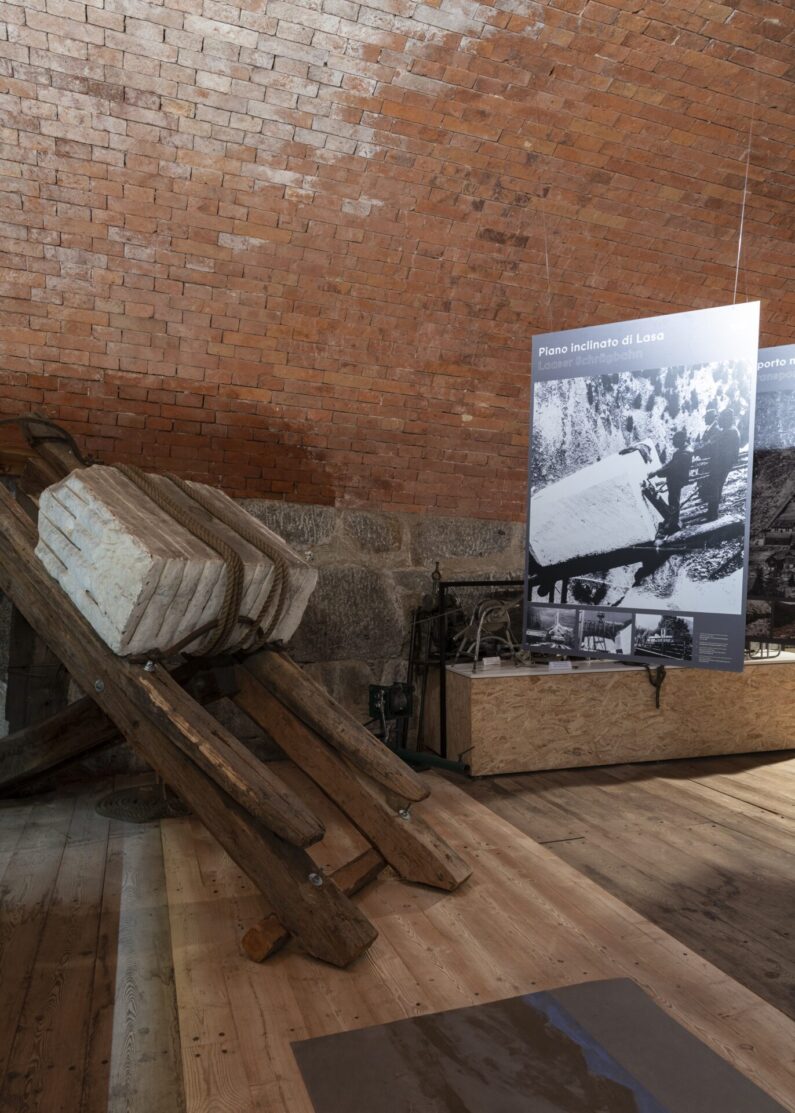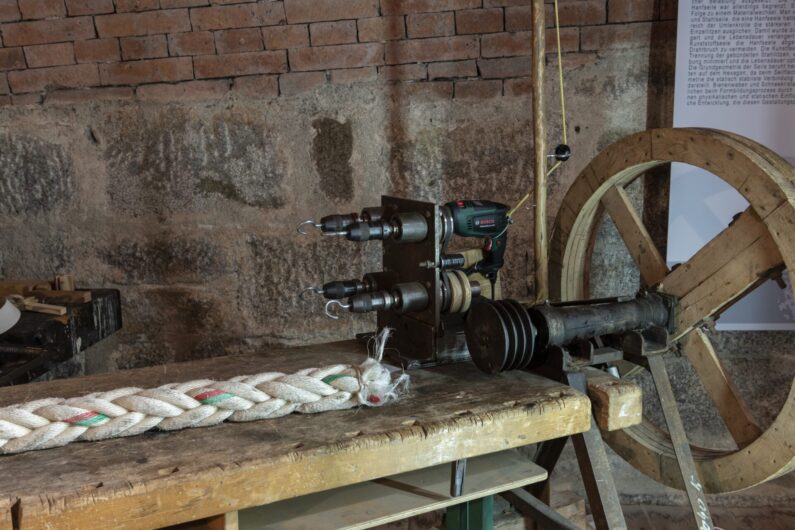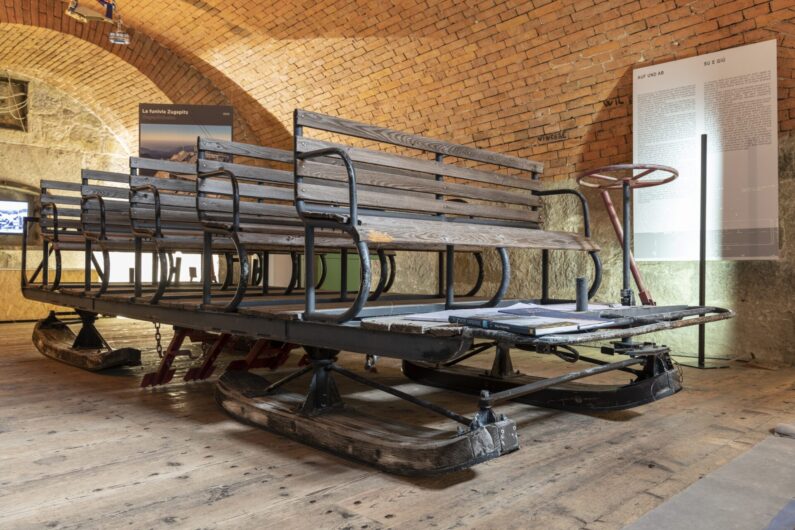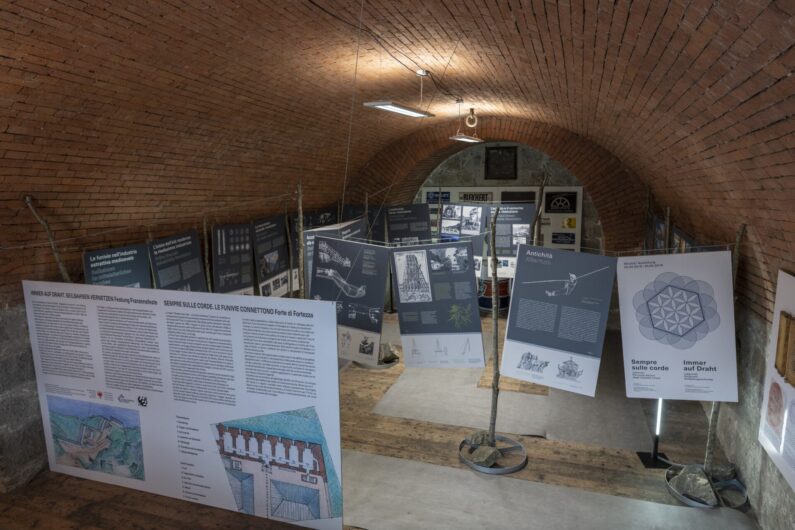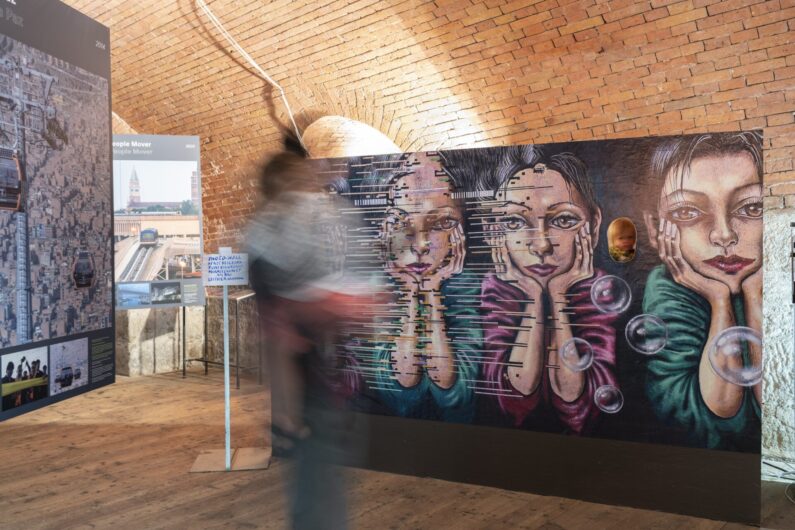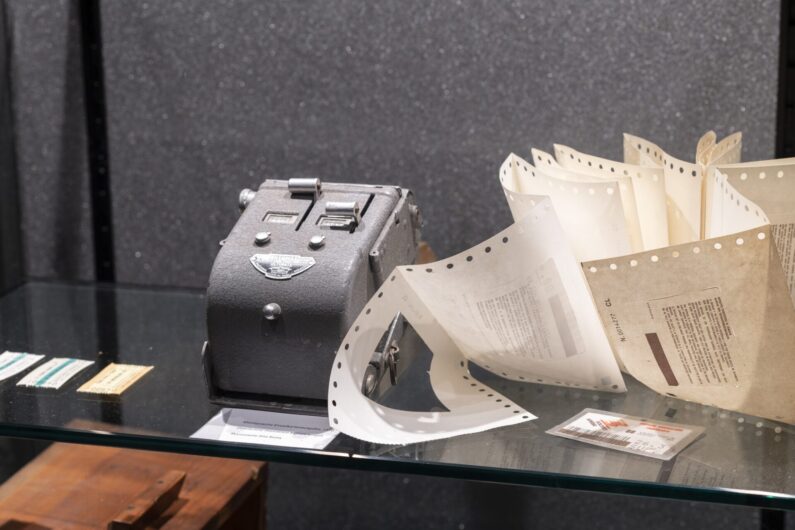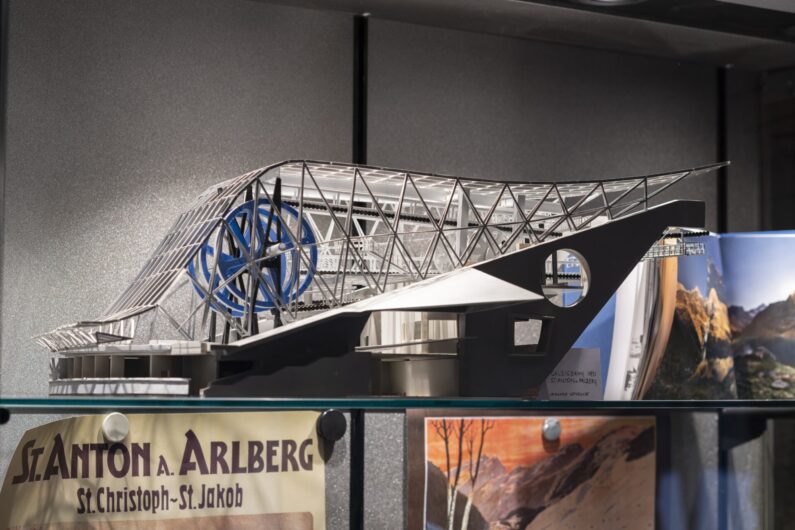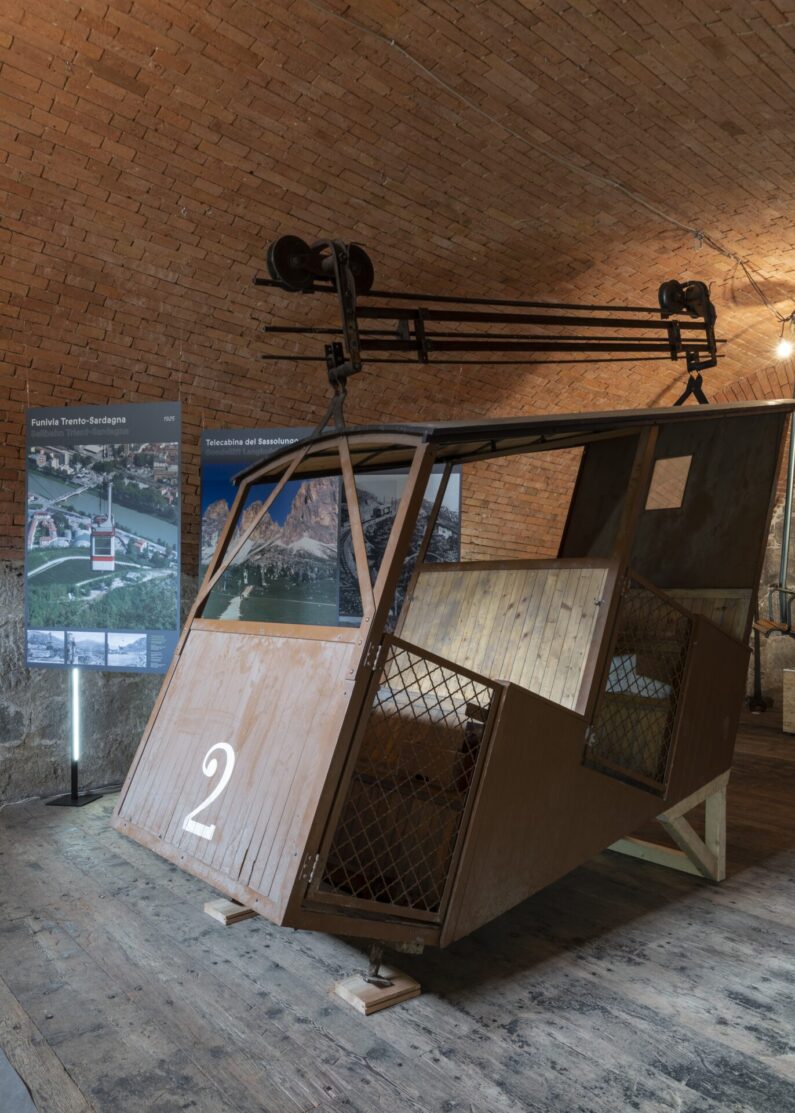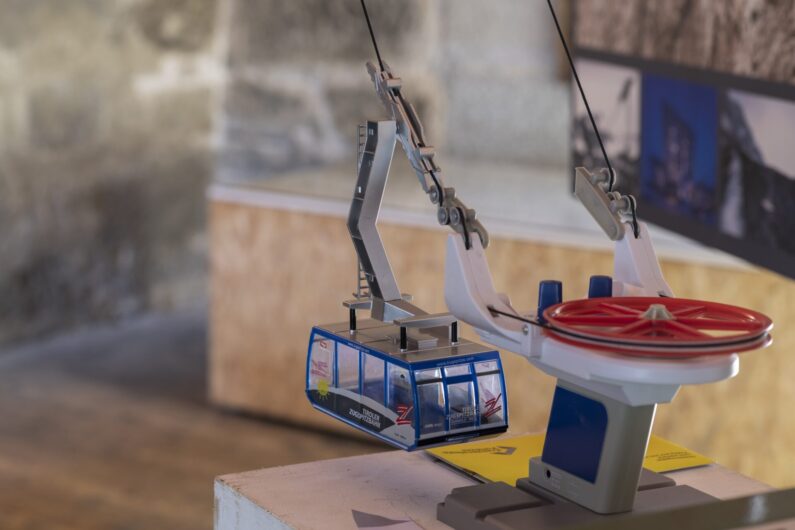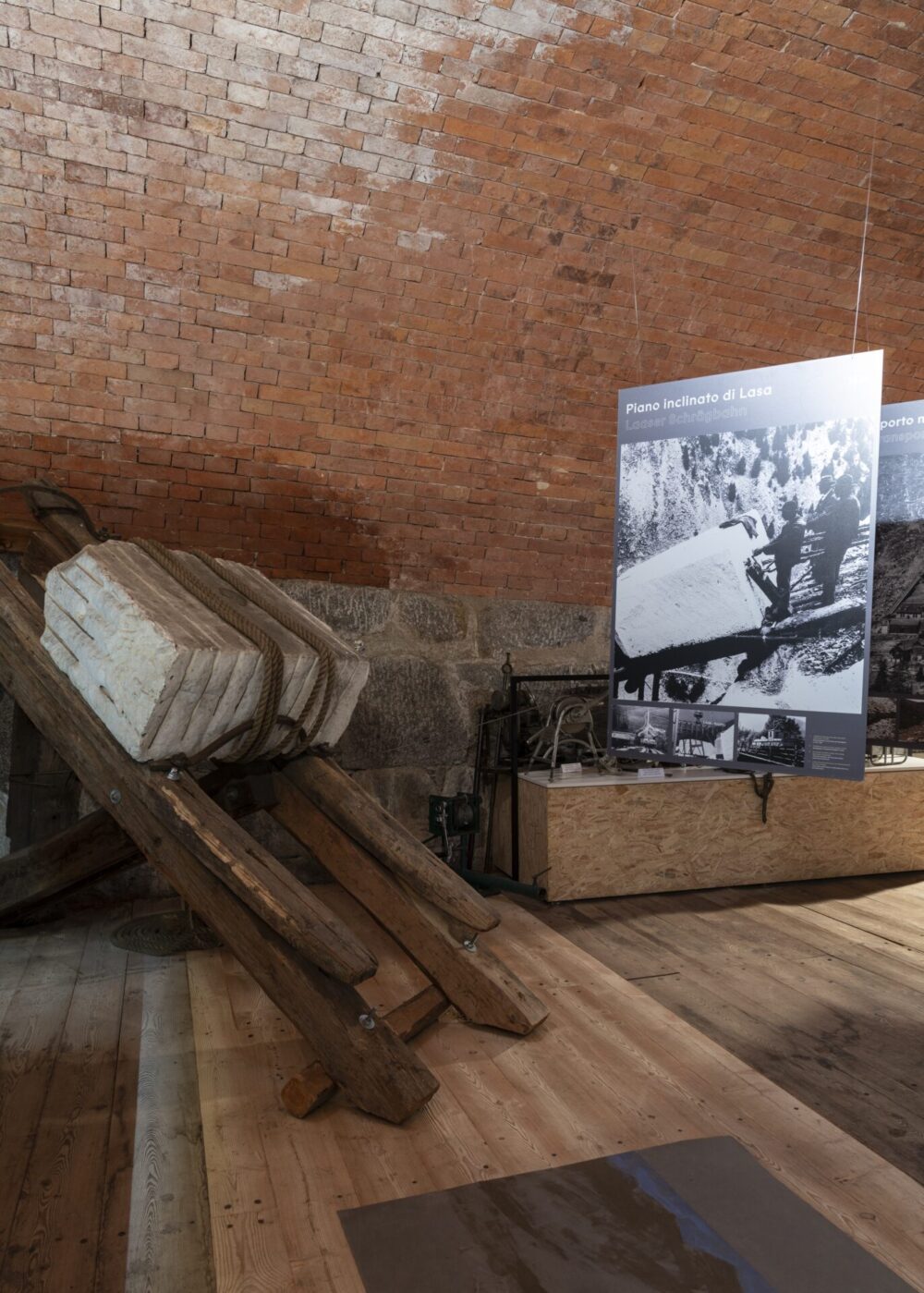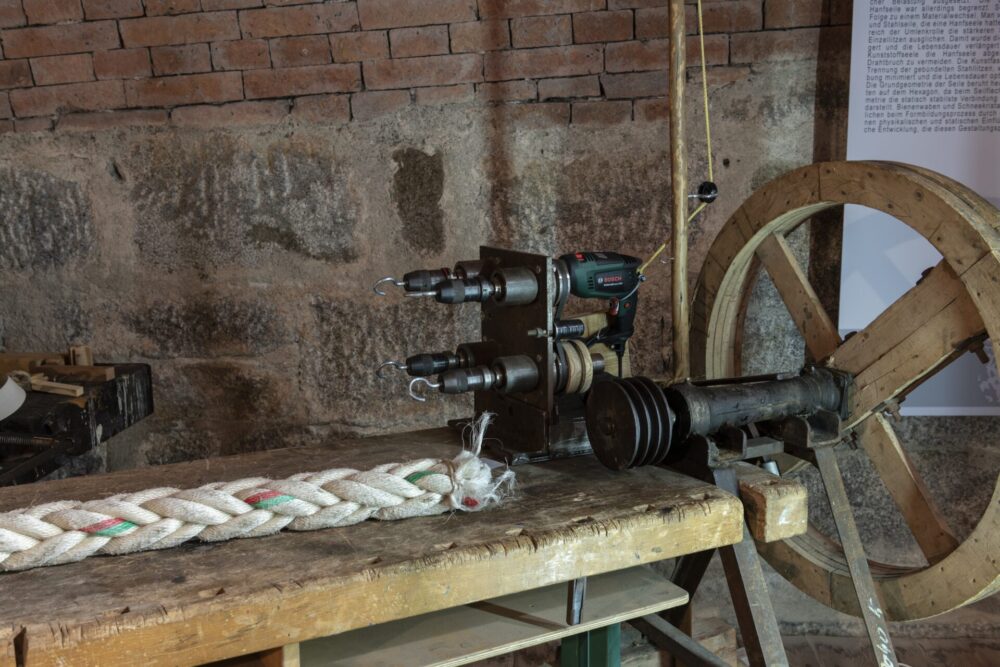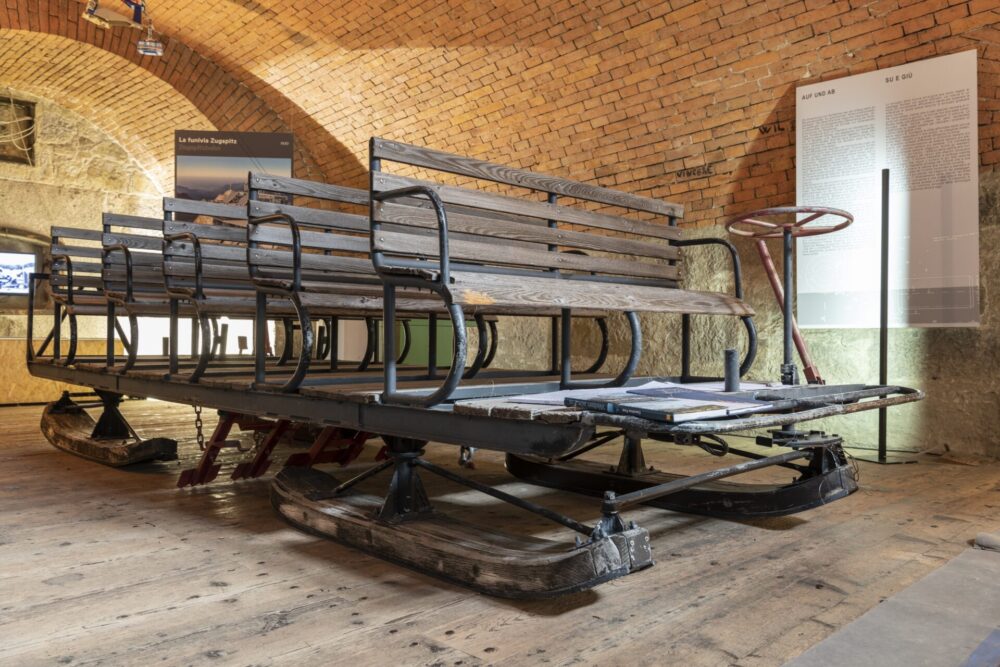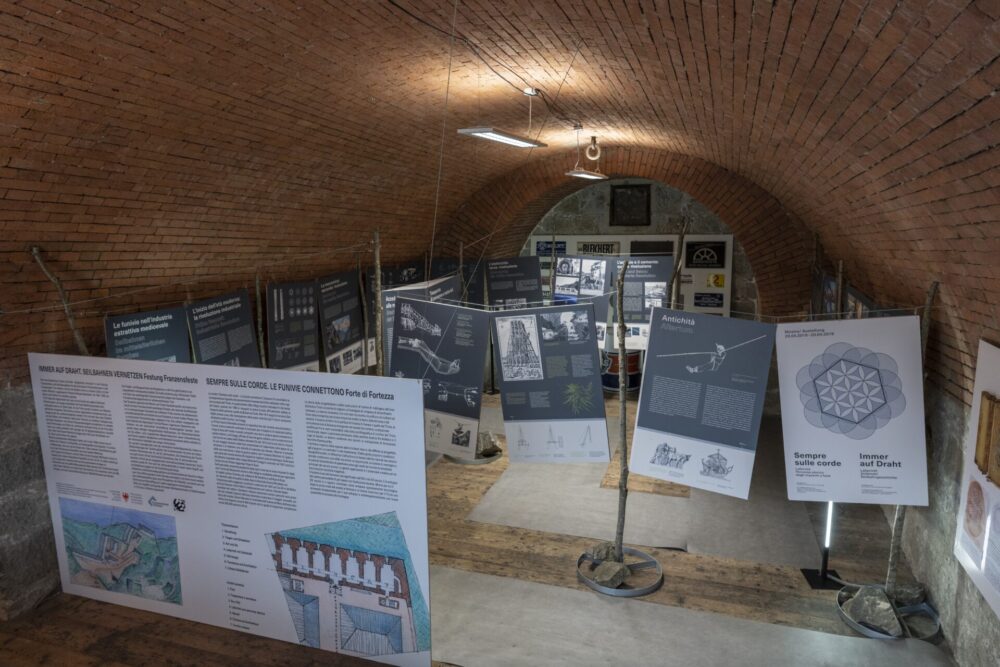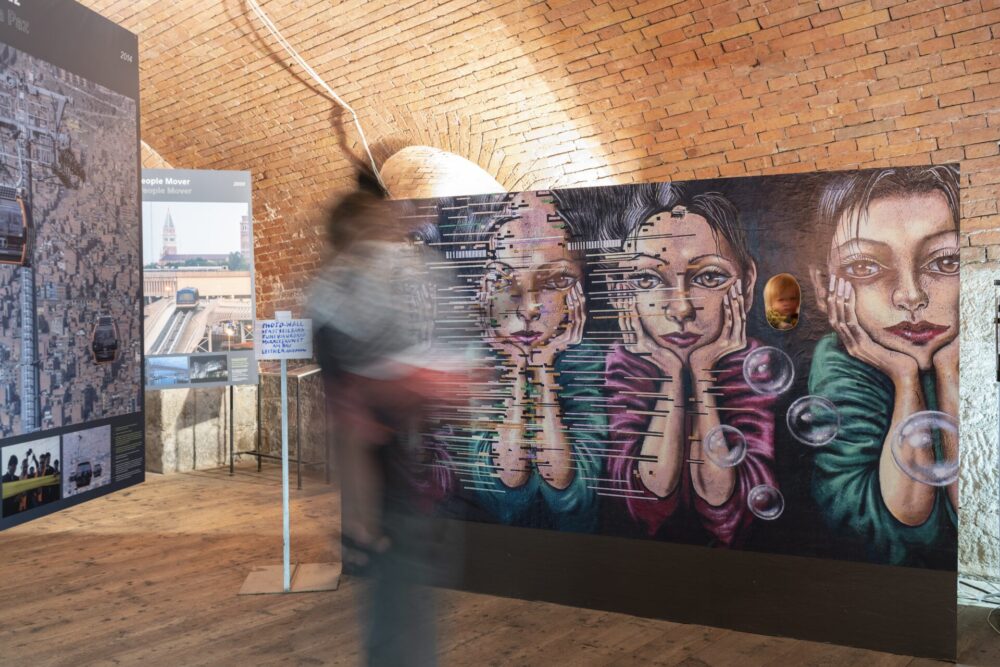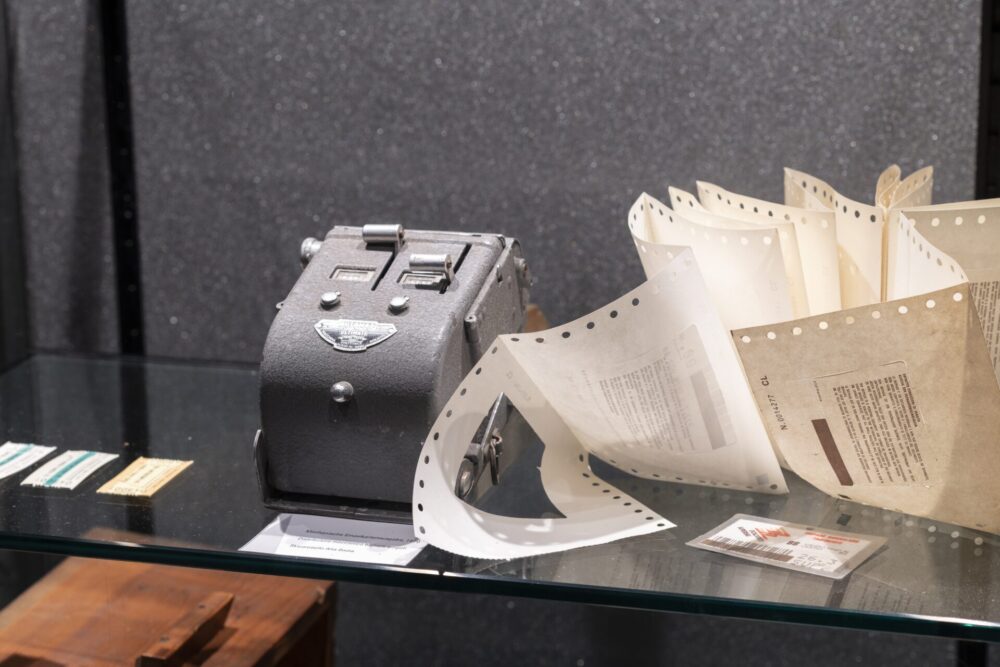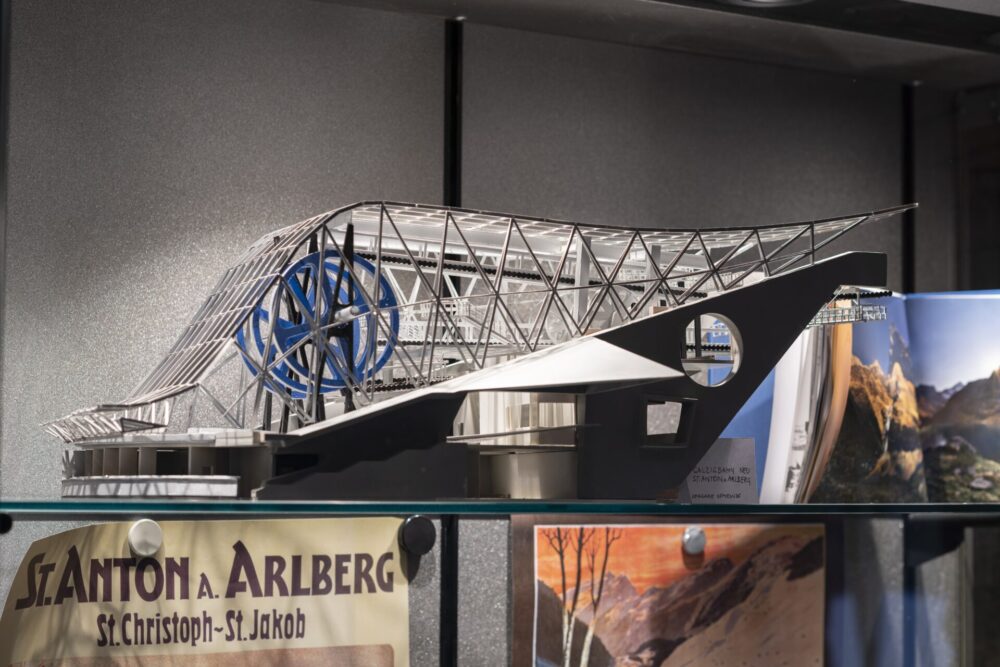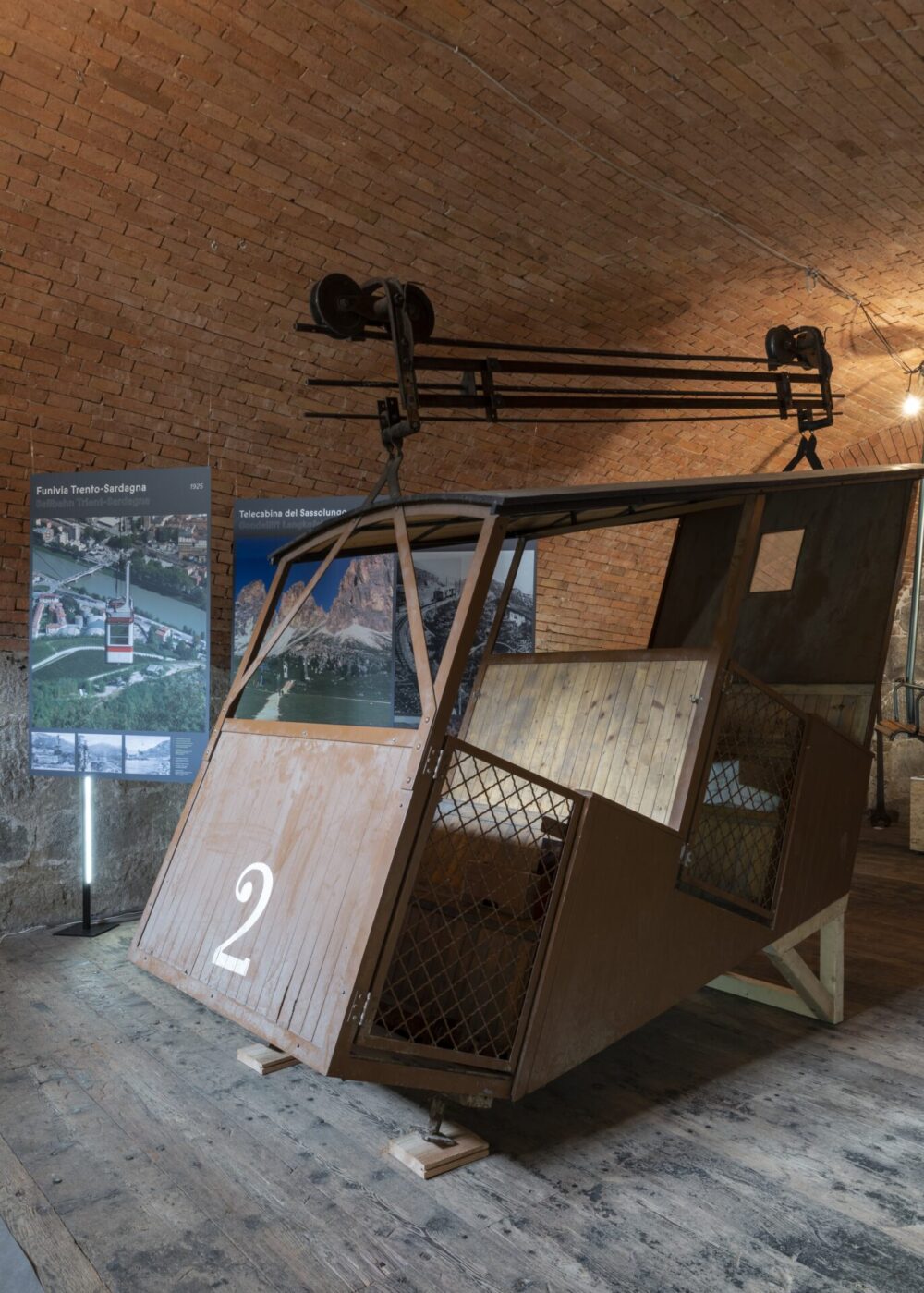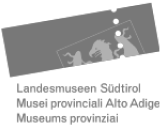Always on the wire. Cable cars connect
Time period
20. April – 22. April 2019
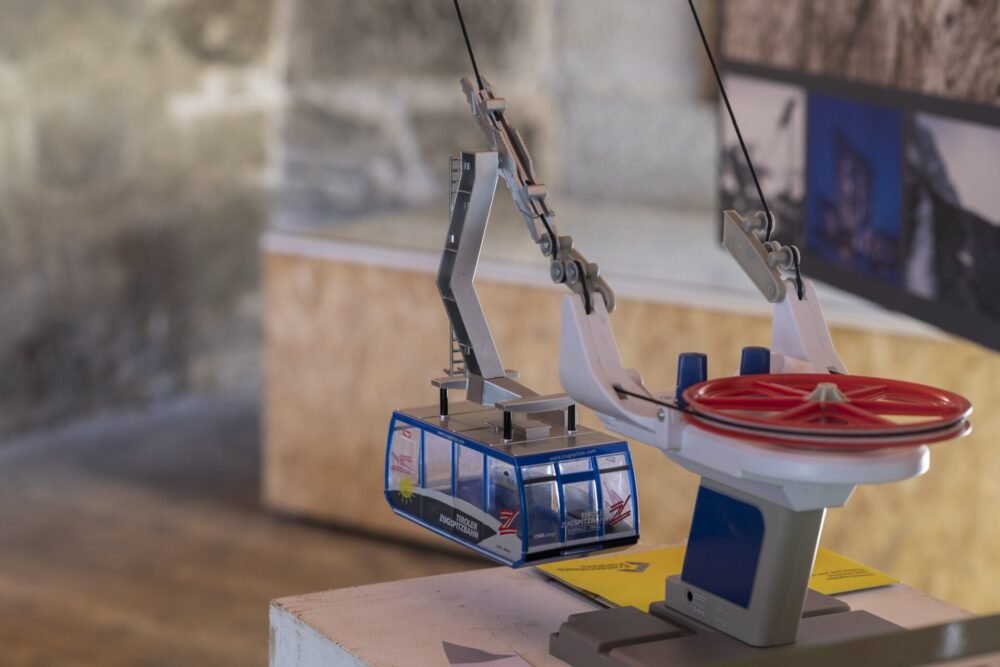
The exhibition Always on the wire in the Franzensfeste Fortress aims to raise awareness of the technical pioneering achievements that have contributed to the upswing in tourism in the European region of Tyrol since the early years of the 20th century.
Already in the days of the Emperor, in 1908, South Tyrol caused a sensation with the world’s first publicly approved passenger mountain railway from Bolzano to Kohlern. This was followed in 1912 by the Vigiljochbahn near Lana, on which the later South Tyrolean cable car pope Luis Zuegg was already involved. The First World War put an abrupt end to excursion tourism. Hundreds of material ropeways were used at the front. This led to a real innovation push. Luis Zuegg, as a landstorm engineer, was able to prove as early as 1915 with the construction of a cable car on the Stilfser Joch that his theories on tighter rope tension made lower construction costs and higher travel speed possible. He applied for a patent for his inventions and after the war was able to build no fewer than 35 mountain cableways worldwide with the Bleichert company from Leipzig. In 1937, the cable car from Ortisei to the Alpe di Siusi was also built according to the Bleichert-Zuegg system. In the 1930s, with the rise of winter sports, the “Slittovie”, sledge lifts, had also established themselves in South Tyrol, in Corvara, in Selva and also on the Alpe di Siusi. A further leap in quality was made with the invention of the chair lift after the Second World War. In 1947, Erich Kostner and Karl Hölzl, together with the current world leader Leitner, built the first collapsed chairlift in the Val Badia valley to the Col Alt. However, a few more years were to pass before the world’s largest ski carousel was created from the modest installations in the Dolomite region. Under Gianni Marzola, the tariff association became a high-tech company with now more than 460 lifts and a total transport capacity of 580,000 people per hour.
The project and construction history of the mountain railways in Old Tyrol provides insight into an unusually interesting picture of the times. The spirit of optimism in the economy, politics and culture of the fading Danube Monarchy has left its mark on the history of railways and tourism in the old Austrian Tyrol. The tug-of-war between Viennese and Tyrolean railway policy, the competition with Switzerland, a rising star in tourism, the national conflict situation in the multilingual border region of southern Tyrol make the old Austrian railway landscape from Kufstein to Lake Garda a hot spot that has spurred on pioneering technical achievements. The often impassable and steep terrain of the alpine region of Tyrol has not made it easy for planners, engineers, builders and workers in the technical development. But it was precisely these adverse topographical conditions, the differences in altitude and the wild, still untamed water resources that were both a challenge and an opportunity. Mountain railways and power stations in this country are among the technical highlights of the last century worldwide. The ingenious approach and the existing creative potential have led to masterpieces of engineering. Tourism is one of the most important phenomena of the 19th and 20th centuries. The development of tourism goes hand in hand with technical development. The 19th century is therefore rightly described as a highly technical age. After the middle of the century, the railway became a household name for Tyrol and cable cars provided access to the mountains.
The exhibition was accompanied by the publication: Mitterer Wittfrida (hsg), Immer auf Draht. Seilbahnen vernetzen, 1st edition, Bolzano, Athesia Druck, 2018.
With contributions by Arno Kompatscher, Heiner Monheim, Wendelin Weingartner, Meinrad Pizzinini, Joachim Moroder, Horst Hambrusch, Karl Gabl, Andreas Conca, Martin Leitner, Ernst Streule, Markus Pitscheider and Wittfrida Mitterer.
Organised and curated by the Board of Trustees for Technical Cultural Assets
